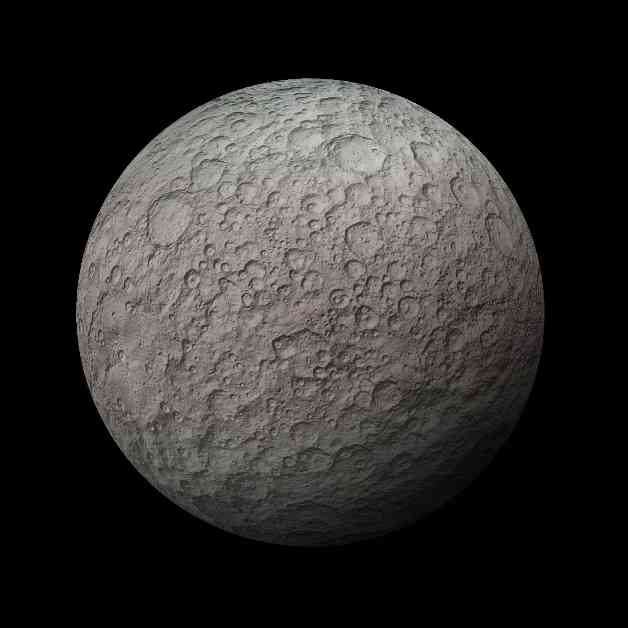Ceres, a dwarf planet located in the asteroid belt, has long been a subject of fascination for scientists. Recent discoveries have indicated that this celestial object may be far richer in ice than previously believed, challenging existing theories about its composition.
Researchers from Purdue University and NASA’s Jet Propulsion Laboratory (JPL) have conducted computer simulations that suggest Ceres could be made up of more than 90% ice, with only a small amount of rocky material. This finding contradicts earlier estimates which placed the proportion of ice at less than 30%. By studying the craters on Ceres’ surface, scientists have observed that these features have remained relatively unchanged over billions of years, indicating a significant presence of ice mixed with rocky materials.
Moreover, the researchers propose that Ceres may have once had a mud ocean that froze over time, leaving behind an icy crust embedded with rocky substances. This theory is supported by geological formations such as pits and domes found on the dwarf planet’s surface. Data collected by NASA’s Dawn mission, which mapped Ceres’ surface from 2015 to 2018, has also revealed evidence of frozen water beneath the surface.
The implications of these findings are significant. Ceres could serve as a valuable model for studying icy worlds within our solar system, such as the ocean moons Enceladus and Europa. Its accessibility makes it an appealing target for future space missions aimed at collecting samples and further exploring its mysteries.
Ceres, with a diameter of approximately 590 miles (950 kilometers), was discovered in 1801 by astronomer Giuseppe Piazzi. Initially classified as an asteroid, it was later reclassified as a dwarf planet in 2006. Its icy surface and potential history of a muddy ocean make it an intriguing object of study for researchers seeking to understand the formation and evolution of the solar system. By studying Ceres, scientists hope to gain insights into the geological and hydrological processes that shape icy moons in our cosmic neighborhood.
In conclusion, the recent discoveries about Ceres have opened up new avenues of research and exploration in the field of planetary science. By unraveling the mysteries of this dwarf planet, scientists may uncover valuable clues about the history and composition of icy worlds within our solar system, further expanding our understanding of the cosmos.













